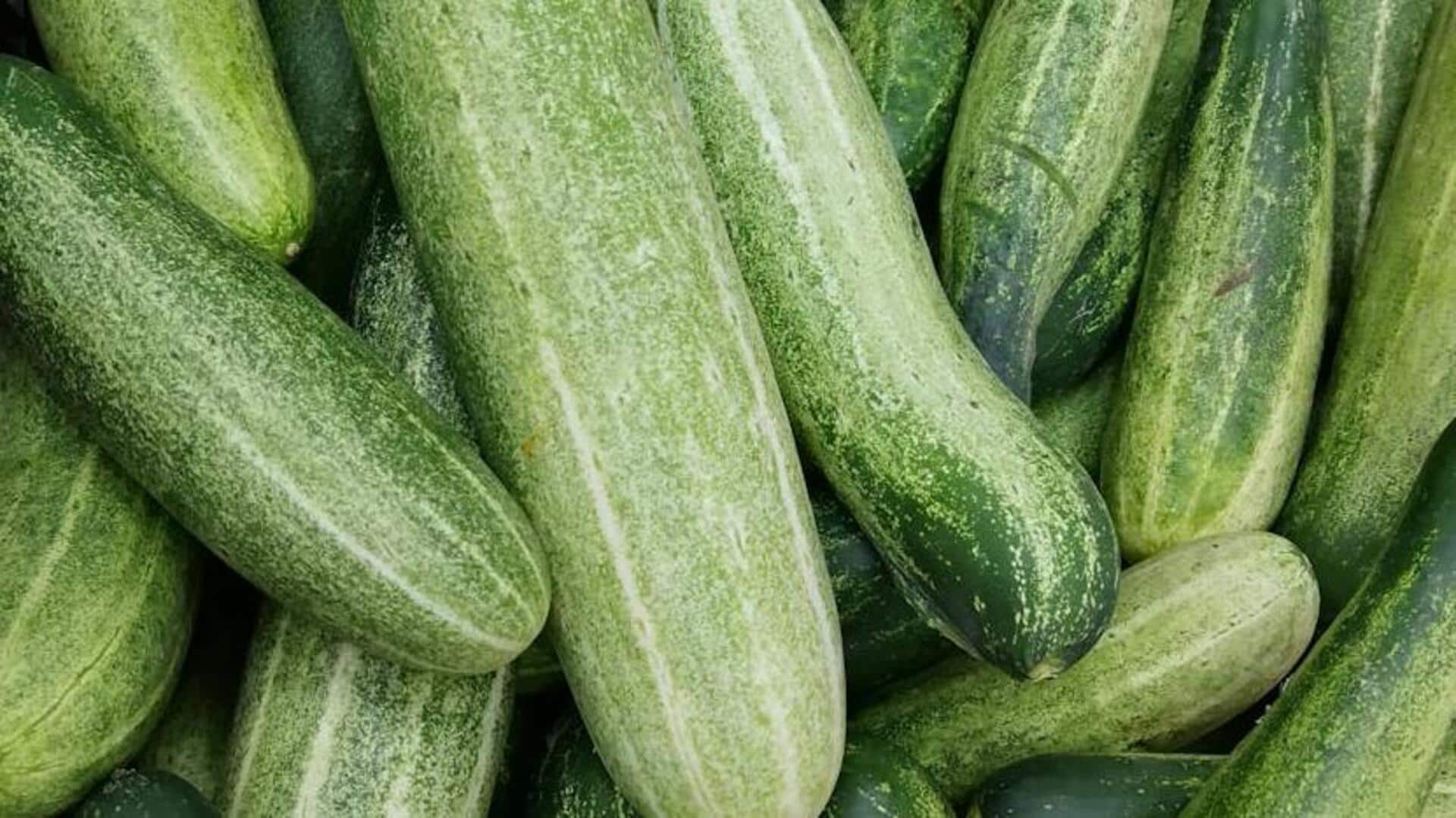
Cultivating crisp cucumbers: 5 garden fresh tips
What's the story
Growing your own cucumbers is a great way to enjoy fresh, crisp veggies straight from the garden. But getting the best results requires a bit of know-how and some TLC. This article shares 5 key tips for growing healthy, tasty cucumbers you'll be proud to call your own. By following these tips, you can look forward to harvesting beautiful, flavorful cukes right from your backyard.
Variety selection
Choose the right variety
Choosing the right cucumber variety is key to your gardening success. There are many types to choose from, each adapted to different climates and spaces. For small gardens or containers, choose compact bush varieties. If you have a large garden, go for vining types that need more space to spread out. Opt for disease-resistant varieties to avoid problems during growth.
Location matters
Plant in a sunny spot
Cucumbers love heat and require a minimum of six to eight hours of full sun exposure every day. Select a location in your garden that gets plenty of sunlight all day long. This will promote robust growth and optimal production. If you're short on space or have a shady garden, you can use grow lights for indoor cultivation as an alternative.
Watering wisely
Maintain consistent moisture
Cucumber plants need plenty of water, particularly during flowering and fruit development stages. Try to provide at least one inch of water per week through rainfall or irrigation, but adjust as needed based on temperature and soil type. Sandy soils dry out more quickly than clay soils, so you may need to water more frequently. Apply mulch around the plants to help maintain soil moisture and minimize evaporation.
Feeding your plants
Fertilize properly
Cucumbers are heavy feeders and will benefit from regular fertilization. Start with a balanced fertilizer at planting time, then switch to a nitrogen-rich formula every four weeks until flowering starts. Once you see flowers, switch to a phosphorus-rich fertilizer to promote fruit development. Be careful not to over-fertilize, as this can lead to lush foliage at the expense of fruit production.
Pest control
Manage pests and diseases promptly
Keep a close eye on cucumber pests such as beetles and aphids, as they can rapidly damage plants. Employ strategies like crop rotation, row covers, and beneficial insects to prevent infestations. For diseases like powdery mildew, make sure plants are well-spaced for optimal air circulation. If you spot disease, promptly apply organic fungicides or remove affected leaves to prevent spread.